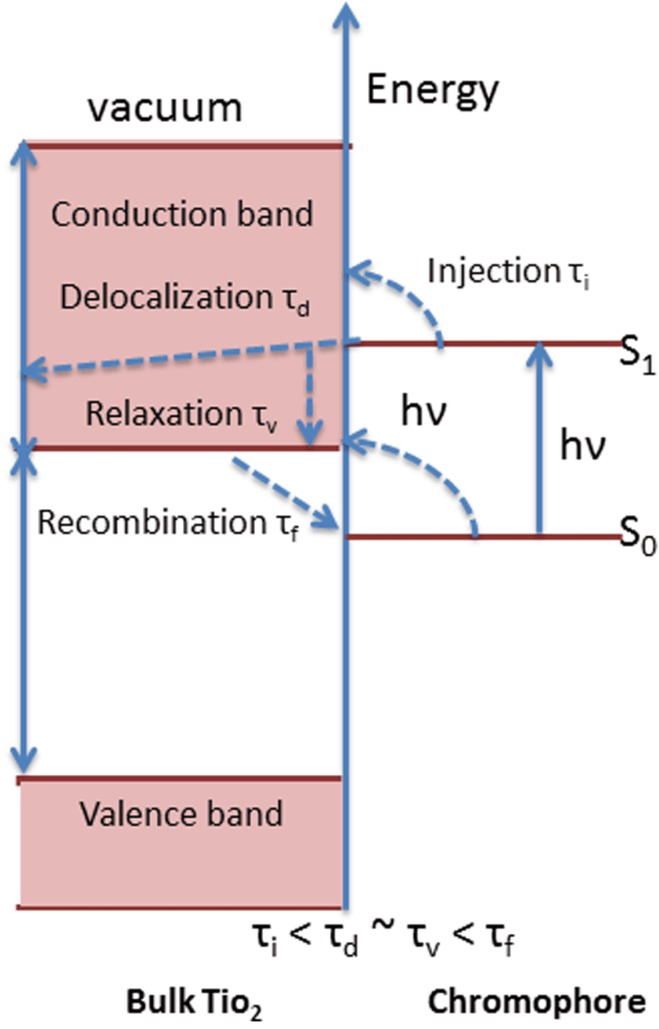Figure 13.
Energy diagram of the chromophore-TiO2 interface. An absorbed photon promotes an electron from the ground state (S0) of the dye located in the semiconductor energy gap into an excited state (S1) that is in resonance with the conduction band (CB). Typically, the dye-excited state is well inside the CB. An additional direct photoexcitation from the dye ground state into semiconductor state near the CB edge becomes possible with a strong coupling as in the catechol-TiO2 system. In some systems, such as alizarin-sensitized TiO2, the dye-excited state is located near the edge of the TiO2 CB. Efficient electron injection into the edge of the CB avoids the energy and voltage loss by relaxation to the CB edge that is inevitable if injection occurs deep into the CB. The injected electron delocalizes from surface to bulk, simultaneously relaxing to the bottom of the CB owing to coupling to vibrations. If the electron returns to or remains trapped at the surface, it recombines with the positive charge residing on either the chromophore or the electrolyte mediator. (Adapted from Reference [243]).

